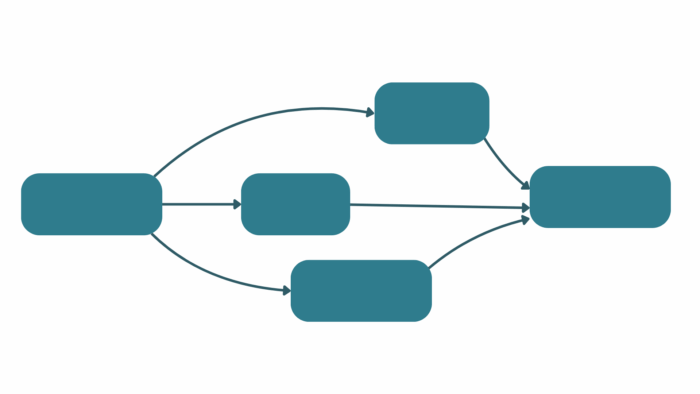Experiences of using QuIP as a peer researcher
| 21 July 2025 | News

Bath SDR is working with TASO and St Mary’s University, Twickenham to evaluate their ‘Boundary Spanner’ project which supports student wellbeing amongst widening participation students. We hired postgraduate students at St Mary’s to conduct open-ended interviews with students participating in Boundary Spanner activities (gym sessions and paint workshops).
In this guest blog, one of the researchers, Nahiyan Rashid, shares his experience of being a peer researcher and using the QuIP approach.
Interviewing peers has been a compelling experience. I had the opportunity to hear and capture diverse perspectives held by Boundary Spanner participants, ranging from regular attendees to those who have been involved in the recruitment, marketing, and administrative aspects of the programme.
Building rapport as a peer researcher
Building rapport with research participants is important to help them feel comfortable to share their experiences, particularly with open-ended interviewing styles like QuIP. Initially I found it challenging to break the sense of formality that can come with sitting down and recording an interview. However, I think my role as a peer researcher helped mitigate this challenge in a few ways.
Firstly, I relied on my mutual interests and similar experiences with the interviewee to build rapport. Before each interview, I would keep the conversation brief and casual, asking the student about how their day had gone and what they had done so far. As a former undergraduate student at St Mary’s, my familiarity with balancing the demands of academic work and social life at University helped me to empathise and connect with the interviewees. I could also relate to those who travel to university through a similar route to me and felt we were able to bond over the challenges that come with commuting.
As I am a similar age to many of the participants, we naturally had similar interests and reference points to discuss (e.g. assignments, music, travel, and sport). In particular, I feel that my personal investment in fitness helped facilitate the dialogue between myself and interviewees who attended the gym sessions. As someone who engages with fitness as a hobby, my familiarity with training regimes and fitness vernacular proved to be useful in gathering more detailed insights from interviewees.
Secondly, I was able to use informal and colloquial language – speaking in a similar way to the students being interviewed – which I think helped remove any tension in the room and allowed the interviewee to perceive me as a peer rather than as a figure of authority.
Flexibility to adapt
I learnt how to effectively optimise the flexibility of the QuIP approach, adapting my interviewing style to meet the requirements of each participant through fine-tuning aspects such as tone, delivery of questions, body language, timing, and at times, being comfortable with silence.
The flexibility of the QuIP method was particularly helpful in building a strong rapport with neurodiverse respondents. Firstly, it allowed me to rephrase questions in real time; some respondents benefitted from a simplified and more direct question, whereas others seemed to prefer open-ended prompts to trigger their thought processes. I could also manage the pace of the interview to give the respondent enough time to process information and then share their thoughts. There were often longer silences with neurodiverse respondents but given the semi-structured format I felt I could pause, allowing them longer processing times. One student praised my interviewing style, noting I had given them time to respond and had actively listened to their responses. I noticed the gradual progression through our interview as they slowly came out of their shell and engaged with me.
In some ways it felt as though the interview was being guided collectively, with me just adapting my questioning to mirror the respondent’s thought process.
Secondly, whilst the QuIP interview guide is split into outcome domains (in this case, social life, academic management, and wellbeing) I knew I didn’t need to stick to that pre-defined order. Given the flexibility, I knew I could revisit topics later on, which was useful and meant I didn’t need to disrupt the natural flow of conversation, especially if the respondent was taking a bit of time to formulate their thoughts and then communicate them to me. In some ways it felt as though the interview was being guided collectively with me just adapting my questioning to mirror the respondent’s thought process. More structured interview methods may not have allowed me to really indulge in the conversation and stay with the topic in the same way.
Focusing on causal pathways
Throughout this research project, the QuIP method has advanced my ability to perform semi-structured interviews. Focusing on causal narratives demands strong listening skills and accurate probing techniques.
In interviewing these participants, the QuIP method has taught me how to trace causal pathways by focusing on outcomes and subsequently, working backwards to identify the most significant drivers of change. This reversed approach helped me build a detailed picture of the casual narratives; I feel that working backwards proved to be crucial in understanding the extent of change and the precise factors involved in mobilising those changes.
I’ve really enjoyed being part of this study and it has definitely given me a new perspective to interviewing.





Comments are closed here.